Animal eye problems
Learn more about animal eye problems by exploring our site and become a true expert on the animal kingdom. You'll find content created for the best professionals with pictures, videos and opinions.
51 articles
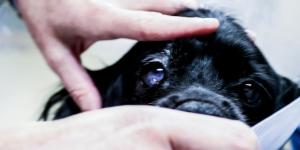
Vision loss in dogs can be a progressive process, often as a result of degenerative disorders. The dog can gradually lose vision until they become completely blind. Dogs are very adaptable animals. Their keen sense of smell and hearing allow them to adequately navigate their environment even if they...

If you see a brown spot on your dog's eye, it is possibly due to pigmentary keratitis. Also known as pigmentation keratitis in dogs, it is a result of chronic inflammatory processes which affect the cornea of the eye. The cornea is the transparent structure that covers the iris and pupil, allowing light...

Ocular tumors are disorganized growths of cells that can occur in the different tissues and structures that make up the eye. Symptoms of eye tumors in dogs will depend on the affected tissues, with some complicating treatment more than others. The therapies required can be invasive, especially if the...

Eye discharge is often a clear sign that something is wrong, and while it might be tempting to wait and see if it resolves on its own, addressing the issue promptly is crucial. Various underlying factors—ranging from infections and allergies to more serious health conditions—could be causing this symptom....
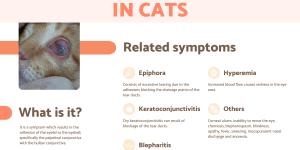
Symblepharon in cats is an ocular condition whereby the conjunctiva of the eyelid attach the the outer conjunctiva of the eyeball. These are known as the palpebral and bulbar conjunctiva, respectively. In can occur in one or both eyes, resulting in various symptoms such as discomfort and inflammation....
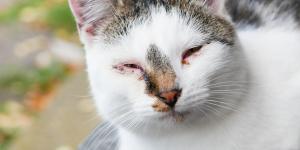
Our cat's eyes are indicators of their general health. While they will produce tears for normal lubrication, any abnormal discharge is a sign of a possible threat to their well-being. Different colorations of this discharge will help to diagnose the problem, although an official diagnosis will be required...
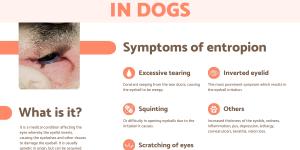
Entropion in dogs is a medical condition which causes the eyelids to invert along their edge towards the surface of the eyeball. This is usually a result of eyelid muscle contraction and the tightening of ligaments anchoring the eyelid muscles. It results in the eyelashes rubbing directly against the corna...
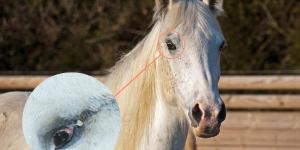
Has your horse been squinting, weeping, or sporting a red, irritated eye? You might be facing a common foe: conjunctivitis, also known as pink eye. While it might seem like a minor inconvenience, understanding and recognizing this condition is crucial for your horse's well-being. Untreated, it can lead...
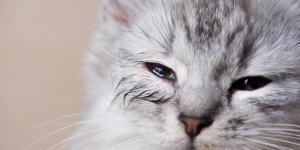
Feline chlamydiosis is a highly contagious bacterial disease caused by the pathogenic bacteria Chlamydia felis. Although its symptoms are most associated with problems in the cat's eyes, it can also affect many different parts of the cat's organism such as the genitals and upper respiratory tract. Also...
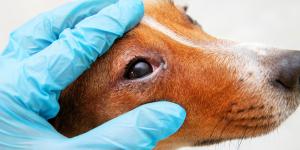
When you see eye discharge from a dog, it often appears as green gunk or eye boogers which is known scientifically as rheum. It is a very common condition, especially in certain dog breeds. It often occurs after sleep and is not necessarily related to any specific disease. When it is a problem which does...
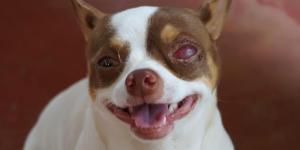
Microphthalmia is an uncommon yet significant condition that affects the development of a dog's eyes. Characterized by abnormally small eyes, microphthalmia can range in severity and impact a dog's vision to varying degrees. While genetic factors often underlie this condition, other causes such as intrauterine...
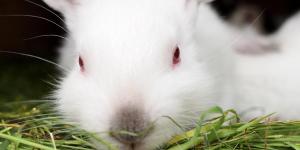
Red eyes in rabbits can be a natural trait for certain rabbit breeds, especially if they have white hair. As with most physical traits, it is a result of genetic conditioning passed down from previous generations. It should not cause a health problem for them or affect their wellbeing. There are some...

Although most associated with the eye, uveodermatologic syndrome in dogs can affected various pigmented cells in the body and their corresponding tissues. This means it most commonly affects the skin and the eyes. It is an autoimmune condition which means their entire organism can also be affected. The symptoms...
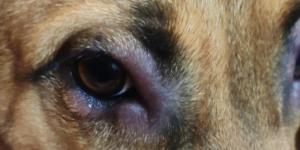
Swollen eyes in dogs can be a common and worrying sight for pet owners. This condition can be caused by various factors, ranging from minor issues to more severe underlying conditions. It is important for pet owners to understand the different causes and symptoms of swollen eyes in dogs, as well as...
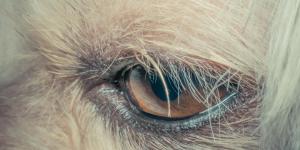
Eyelashes are the small hairs that grow on the edge of the eyelid and have a protective function for the eye. They protect it from external influences such as wind, foreign bodies, dust, etc. and promote the moisture of the eye. When the eyelashes grow abnormally toward the cornea, they can cause a...
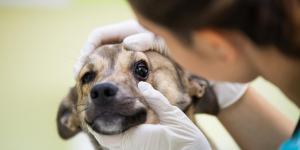
Our dog's eyes can be very expressive, but also capricious. Sometimes they look directly at us and follow us around the room. Other times they might seem to avoid eye contact in a coy way. When they see something which interests them such as a potential plaything, their eyes can dart back and forth in...
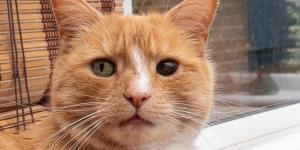
The pupil is the black part of the eye in the center of the iris where light enters the eyeball. When the eye receives light, the pupil contracts, while it dilates when light is dim or absent. Although the name may not sound familiar, anisocoria in cats is a very typical eye condition in which the pupils of...
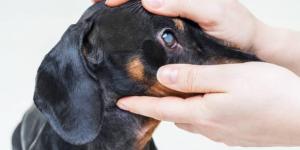
Infections in dogs are common and can become very dangerous if not recognized in time and treated properly. Some of these infections can be more or less mild, but others can permanently damage your dog's vision. Infections in dogs vary greatly, and all require proper veterinary treatment to avoid major...
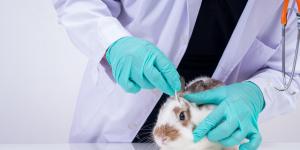
Cataracts are one of the leading causes of vision loss in both human and animal medicine. Rabbits are not exempt from this ocular pathology, but they can be more difficult to diagnose. Although their eye placement means they struggle seeing objects right in front of them, they have acute vision from...

Blindness in cats can occur suddenly, but usually the process is gradual, and the owner may not notice any problems until the cat is completely blind. Medical causes of vision loss include neurological problems, trauma, and cataracts. Fortunately, cats adapt very easily and compensate by developing the...
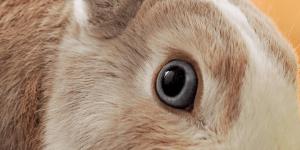
Like other animals, rabbits can suffer from a variety of ophthalmologic pathologies that can affect different ocular structures. Knowing the major clinical signs associated with these pathologies is critical for early recognition of an ocular problem, rapid action, and prevention of complications. If...
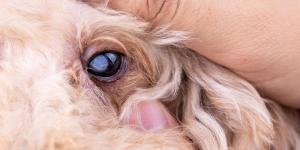
The ophthalmic diseases dogs can suffer from are varied and can affect different eye structures. Lens luxation is a displacement of the lens inside the eye due to a tear in the ligaments that hold the lens in suspension. Lens luxation is a common pathology that affects the lens of some dogs, particularly...
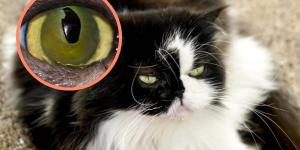
Cats have very distinctive eyes. They can be of varying colors, as well as appear in different sizes according to breed and other factors. While their pupils can dilate according to changes in light, they should generally have a similar appearance. When alterations to the eye occurs, it is a likely sign...
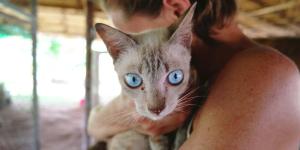
The state a our cat's eyes are a good indicator of their overall health. Fortunately, most cats have large and expressive eyes which make it easier to determine their quality. However, if we see their eyes are swollen and puffy, it is an immediate cause for concern. Swelling and puffiness are due to...
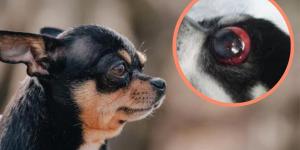
Ocular proptosis is one of the most important ophthalmological emergencies in the canine species. It consists of the forward displacement of the eyeball. This most commonly occurs as a result of trauma that causes the eye to exit its orbit, i.e. it pops out of its socket. Although it can appear in any...

A cat's eyes are not only revelatory about their ocular health, but they can point to issues with their overall well-being. When we see a problem like blepharitis, we should know it is a relatively common problem in feline ophthalmology. Among the main causes of eyelid inflammation in cats, we can see primary...
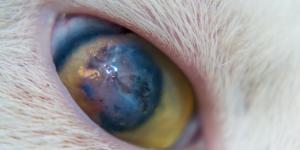
Our cat's eyes can be very sensitive. Even small irritations can lead to serious consequences, especially if left untreated. Corneal ulcers are just one of the serious eye problems which can effect cats. Others include uveitis, cataracts and hyphema. Not all corneal ulcers are the same. Superficial...

Cats are noted for their beautiful expressive eyes. While they can be of varying color, only albino cats will have red in their eye and not even all albino cats share this feature. This redness could be due to varying causes, but when the reason is blood in a cat's eye, it is the result of something...
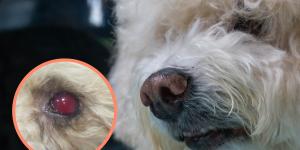
There are many conditions which could cause a dog's eye to become red. Looking at the specific symptoms can help us to determine the cause. When there is inflammation, redness in the sclera (white of the eye) or the conjunctiva is red can suggest various infections and ailments. However, when blood...
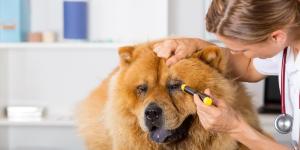
Uveitis in dogs is an eye disorder usually caused by trauma to the eye. When left untreated it can cause serious irreversible damage to our dog. This is why it's so important to be aware of the symptoms of uveitis in dogs and take our to the veterinarian as soon as possible if we observe them suffering...

Uveitis in cats is an ophthalmological disorder that can affect the uvea of felines of all ages. However, it is more common in stray cats. Among its most frequent causes are certain systemic pathologies, traumas, contusions, and penetrating wounds due to fights or accidents.
To learn more about feline uveitis,...
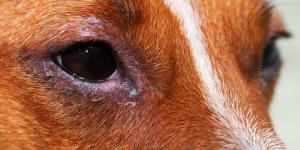
Blepharitis in dogs is defined as the inflammation of the dog's eyelids and can be caused by bacteria, parasites, fungi, immune-mediated diseases or even tumors. In this AnimalWised article we're going to talk about blepharitis in dogs, its symptoms, causes and treatment.
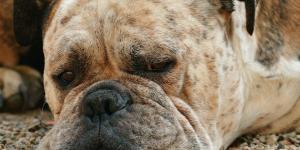
The prolapse of a dog's third eyelid refers to the elevation of the smooth inner eyelid that is located between the cornea and the inside corner of their eyelids. This occurs due to a weakness of the connective tissues that hold the gland in place.
Therefore, if you notice that your dog has a red lump in...
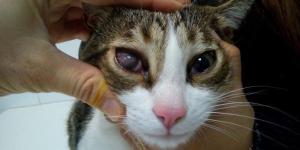
Keratitis in cats is a chronic, inflammatory disease of the cornea, in a cat's eye. This illness is common in cats that are four years of age and younger. If you think your cat may be suffering from keratitis, you've come to the right place for information!
In this AnimalWised article we're going to...

The eye is not considered a vital organ as a cat could still survive if they were lost. It is considered the most important sensory organ as they will have serious problems navigating their environment without it. Despite this, it may take some time before we know if our cat has vision problems. They...
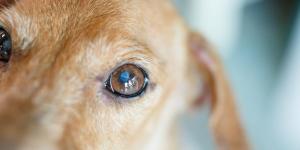
It's common for middle-aged to senior dogs to develop a bluish transparent haze in the lens of their eyeThis is considered a normal change in the lens associated with aging. The medical term for this occurrence is nuclear sclerosis.
In this AnimalWised article we're going to talk about nuclear sclerosis...
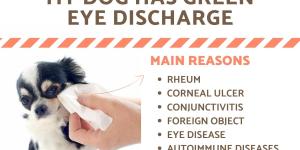
Eye discharge is a common phenomenon in dogs, just as it is with humans. What we might refer to as sleep, or even eye boogers, is something known scientifically as rhuem. Rhuem is present in the nostrils and mouth also, but it is particularly common in the eyes. While it is normally completely harmless...
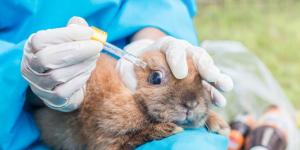
Conjunctivitis in rabbits, known also as weepy eye, is a common rabbit eye infection. Conjunctivitis in rabbits can occur in one or both eyes and could be a indicative of a dental disorder, hence the importance of early veterinary assistance. If you notice any symptoms of conjunctivitis in your rabbit,...

Are you wondering which are the most common cat eye diseases? If so, you’ve come to the right place. Most cat eye diseases and problems can be treated, but in most cases veterinary attention is necessary. If not treated, cat eye diseases can cause irreversible damage and can even result in blindness....
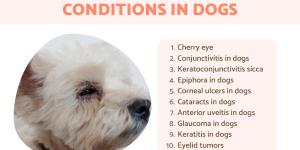
Depending on the type of canine eye problem, it can be difficult to observe symptoms in our dog. If they have an infection, we can easily see swelling and redness of the eye. If they are having an internal problem which is affecting their vision, we may not be aware of the issue until it has progressed...
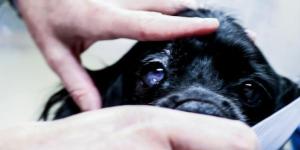
Keratitis in dogs is an ocular disorder that appears as corneal inflammation in dogs, often caused by several different things. Eyes in any animals are incredibly sensitive organs, susceptible to pathologies that will almost always require treatment. If not treated, these such pathologies can result...
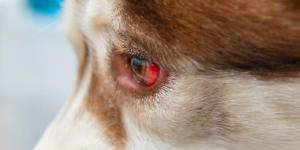
If we see a dog's eyes are red, we should look to whether the eyeball is bloodshot or if there redness is from their third eyelid. This third eyelid is the nictitating membrane, located in the lower portion of their eyelid. If this is swollen, we will often see that the eyes are bloodshot also. Often...
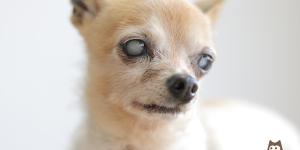
A dog's eyes are a very sensitive part of their anatomy. As with all mammals, their eyes have adapted to their environment over time. This means they are not as good at discerning detail as human eyes, but they are much better at seeing in the dark. This does not means their eyes do not need protection....
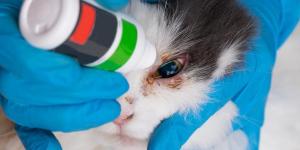
It is relatively common that cats, especially if they are young, experience eye infections. Eye infections in cats should receive veterinary treatment as soon as possible. Although they can be treated easily, if left untreated for too long it can result in a perforated cornea, resulting in: blindness....
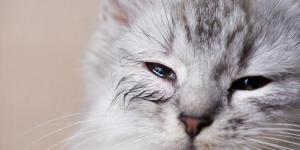
When giving a general medical examination, a doctor will look into our eyes to see signs of health problems. The veterinarian will also do the same for our cats. The reason is that eyes can show signs of brain damage, hemorrhaging or, of course, eye problems, among others. This doesn't mean the doctor...
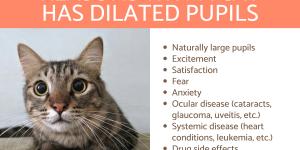
In addition to body language and vocalizations, cats use their eyes to communicate. Facial expressions are used to intimate meaning to us, other cats and animals of different species. For many, a feline’s gaze is one of the most mysterious. This is often due to characteristic width of their pupils. This...
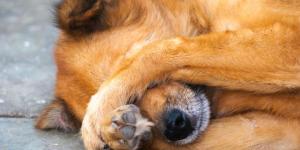
Eye problems in our dogs can be difficult to notice or examine because it is normal for a dog to close their eyes when we want to look at them, making it difficult for us to spot the problem. Therefore if if you notice excess scratching, discharge or any other discomfort it is very important to take your...
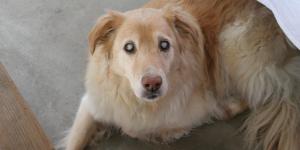
Have you ever wondered why dogs go blind? It is common to see blindness in elderly dogs, but it can be disheartening to see it happen. It is perhaps even sadder when it occurs with younger dogs or puppies. However, it is important to remember that the inability to see doesn't mean they can't have fulfilling...
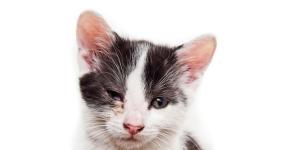
Eye boogers is a crass description, but this doesn't stop it from being pretty accurate. Rheum is a discharge of mucus which is washed away by blinking. This means when they sleep, cats don't wash away this discharge and it collects in the corner of their eyes. The same thing happens in humans. It can...

Eye diseases are very impactful on our pet because they may even affect their character, generating irritability and aggressiveness. In certain breeds of dogs, we must be aware that they are more likely to suffer certain diseases. Therefore, we must monitor them and pay special attention to the care of...
